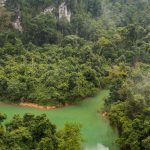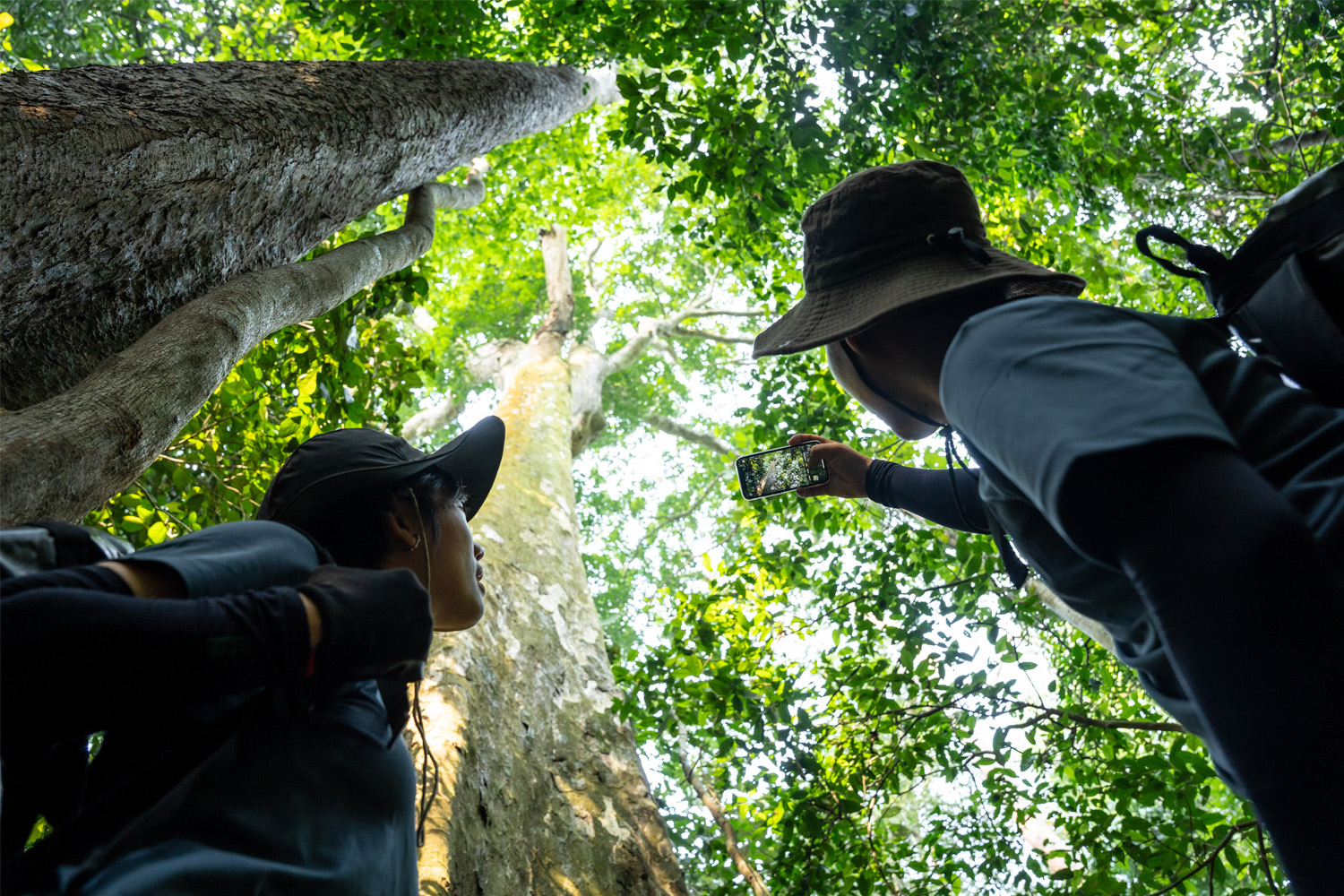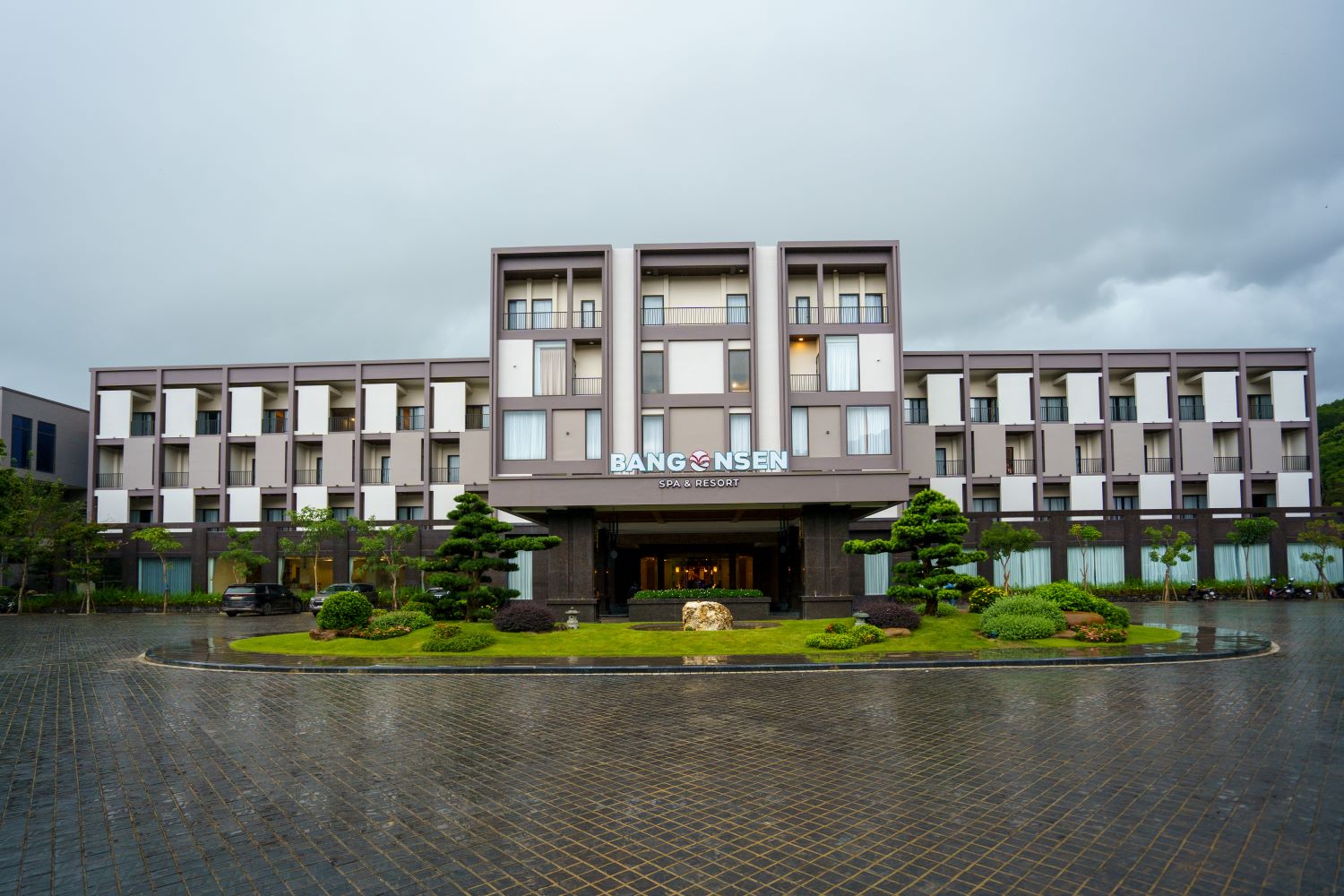Nestled amidst the majestic landscapes of Quang Binh Province, Tan Hoa Village stands as a symbol of harmony between people and nature. With the rich cultural heritage of the Nguon ethnic group and the diverse cave system of Tu Lan, Tan Hoa has emerged as a unique tourist destination, offering sustainable development opportunities for both the local community and the province’s tourism industry.
Overview of Tan Hoa Village
Tan Hoa Commune, covering an expansive area of approximately 71.8 km², is located in the eastern part of Minh Hoa District, Quang Binh Province. As of 2022, the commune had a population of 3,364 people, resulting in a moderate population density of around 47 people per km².
The village is situated in a unique geographical setting, featuring a vast and flat valley surrounded by towering limestone mountains. The Rao Nan River flows through the valley, serving as a vital water source for daily life and agricultural activities. The diverse natural environment, combined with cultural exchanges from neighboring communes, enhances the richness of life in Tan Hoa. With its extensive land and balanced population, Tan Hoa offers a remarkable living environment, where breathtaking nature and cultural diversity coexist.

Tan Hoa’s specific geographical borders are as follows:
- North: Borders Yen Hoa Commune in Minh Hoa District and Son Hoa, Nam Hoa Communes in Tuyen Hoa District;
- East: Borders Cao Quang Commune in Tuyen Hoa District;
- South: Borders Thuong Hoa and Trung Hoa Communes in Minh Hoa District;
- West: Borders Minh Hoa Commune in Minh Hoa District.
Life in Tan Hoa
The life and community of Tan Hoa Village are deeply rooted in the traditions of the Nguon people, a subgroup of the Viet-Muong ethnic group residing in Minh Hoa District, Quang Binh Province. Although not officially recognized as a separate ethnic group in Vietnam, the Nguon people have preserved and developed their unique cultural identity.
With a population of approximately 3,300, Tan Hoa is predominantly inhabited by the Nguon community. They have their own language with distinct linguistic features, along with unique customs, traditions, and folklore. Their way of life revolves around farming, fishing, hunting, and honey harvesting—practices that not only sustain their livelihoods but also embody a legacy of resilience passed down through generations.
In addition to these traditional occupations, the Nguon people of Tan Hoa continue to engage in foraging and collecting wild vegetables. These activities, closely tied to the surrounding nature, provide an abundant food source and reflect the deep connection between the people and their environment.
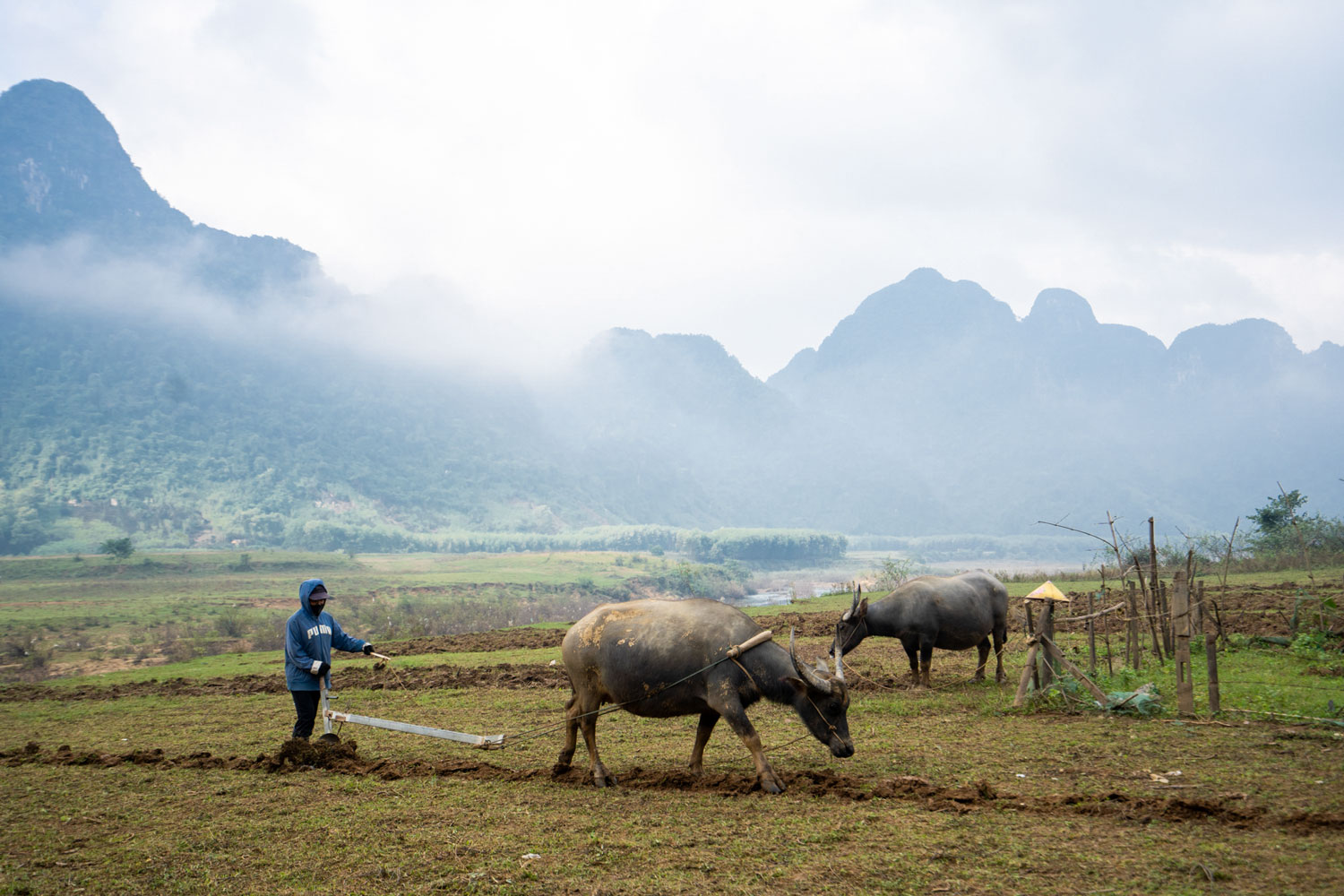
Folk music and culture
With its unique cultural characteristics and the preservation of traditional crafts, the lifestyle and community of Tan Hoa Village contribute to the cultural diversity and sustainability of the region. The Nguon people take great pride in preserving and promoting their mother tongue—the Nguon language. By maintaining their language, they have created a rich and unique repository of folklore and oral literature. This cultural tradition includes folk tales and poetry that deeply reflect the historical realities of the Nguon people from ancient times to the present.
The Nguon community has also developed distinctive folk songs, including Ho Thuoc Ca, Dan Dum, lullabies, and various other musical forms. These melodies not only reflect daily life but also embody the cultural essence of the Nguon people. In particular, Ho Thuoc Ca is considered a cultural symbol of the Nguon people. It is more than just music—it is an expression of their spirit and soul, vividly portraying the emotions and aspirations of the community. These simple yet profound melodies resonate through the mountains and hills, carrying with them the resilience of the people as they endure the hardships of nature, such as torrential rains and floods.
As an integral part of the folk music landscape of Quang Binh Province, Ho Thuoc Ca stands out as a unique cultural element. The lyrics, accompanied by melodious rhythms, such as “Dam (o) teng (ho) thi dam (song) cho song. Hoi len la hoi len…,” not only echo the laborious work of the people but also intertwine with the rhythm of their daily lives. This music serves as a source of inspiration and pride, reinforcing the community’s connection to their origins and cultural heritage.

Cuisine
The unique cuisine of the Nguon people in Tan Hoa Village plays a significant role in their culture and daily life. Dishes such as Com Poi, Thau Lang (sweet potato leaves), Oc Tuc (snails), and Ca Lao (eggplant) are not just simple meals but also symbols of their deep connection to nature and cultural traditions.
Com Poi, a symbol of unity and tradition, is made from Sau (corn) or Thooc (rice) and cassava, with beans added in modern variations. The process of making Com Poi using traditional tools such as mortars, pestles, strainers, and steamers represents the community’s cultural heritage and pride. To prepare this dish, the Nguon people soak corn in hot water for several hours, then drain and pound it into powder using a mortar. The powder is then mixed with water, kneaded thoroughly, fluffed, and placed into a steaming container called Nghe Hoong, which is set over a pot of boiling water known as Noi Nan. The final step involves wrapping banana leaves around the container’s rim before steaming the mixture over an open fire until it becomes Com Poi.

Nguon folk songs have also mentioned the culinary specialties of Tan Hoa Village:
“Troong cho mau teng mua poi
Nho con oc tuc tang ngoi tren vam.”
This translates to:
“Looking forward to the poi season,
Missing the little snail sitting on the tray.”
Another folk song refers to Com Poi and Thau Lang:
“Mat troi ta cac toong ngoi
Ti no cung nho com poi, thau lang.”
This translates to:
“As the sun sets over the hills,
Wherever I go, I still long for com poi and sweet potato leaves.”

The battle against flooding
The Rao Nan River originates from the mountainous border between Vietnam and Laos, flowing underground into Ruc Cave in Trung Hoa Commune before continuing downstream to Tan Hoa Village. Because of this, the Rao Nan River significantly impacts the livelihoods and living conditions of the people in Tan Hoa.

During the rainy season, from September to November each year, the Rao Nan River overflows from its upper reaches, sending strong currents into Tan Hoa Commune. This situation creates significant drainage challenges, as the only escape route for water is through caves at the valley’s end, which lack the capacity to handle massive floodwaters. As a result, dozens of floods occur annually in the area, with water levels reaching up to 12 meters at their peak. Consequently, Tan Hoa has been recognized as the “flood-prone area” of Quang Binh.

Before 2010, residents in this area faced extreme hardships during the flood season. They had to flee to the mountains to escape rising waters, while their homes and belongings were submerged. Livestock and poultry were swept away, and a lifetime’s worth of assets was lost to the floods. Life in Tan Hoa was difficult and filled with scarcity. Whenever a natural disaster struck, residents relied entirely on donations and aid from benefactors and organizations across the country. Ensuring safety and maintaining a livelihood became a daunting and uncertain challenge. In the aftermath of such losses, the people had to start over from scratch.
Since 2015, Chua Me Dat (Oxalis Adventure) has actively contributed to supporting the community in Tan Hoa through various meaningful projects. One of the most notable initiatives is the Tu Lan Race, organized to raise funds for building floating houses for disadvantaged households that lack the means to construct their own flood-resistant homes. Over six years, Oxalis has funded the construction of nearly 200 floating houses with an innovative design, featuring steel-frame assembly, tin-covered walls and roofs for weather resistance, and improved insulation. The size of each house has been expanded to 30 square meters, providing adequate shelter for a family of at least six members to safely endure the flood season.
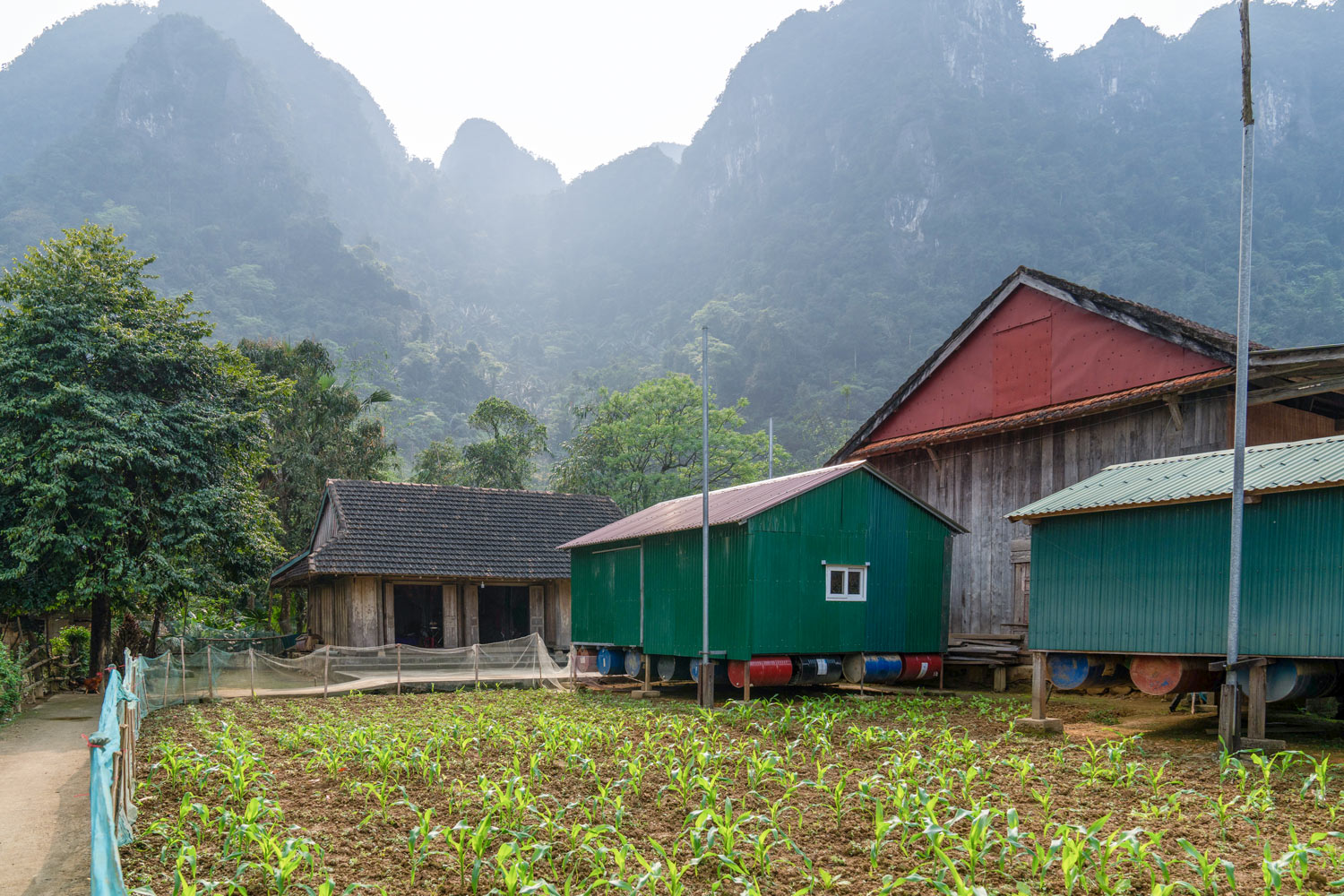
How Oxalis Adventure contributes
Oxalis Foundation
The Oxalis Foundation was established in 2015 and officially licensed in 2019. Over the years, the Oxalis Foundation has carried out numerous key projects, including building schools in Doong Village and an elementary school in Village 5 in Tan Hoa. Hundreds of scholarships are awarded annually, 70 floating houses have been built for the residents of Tan Hoa, and other initiatives such as swimming classes for students have been implemented. Additionally, the Oxalis Foundation provides emergency support in times of natural disasters and pandemics.
The Oxalis Foundation was founded and is operated by Oxalis, with the active participation of the entire staff, especially those in the tourism industry. Thanks to regular contributions from tourists joining Oxalis tours, support from the company’s community of friends, and a portion of Oxalis’ business profits, the foundation continues to make a significant impact on improving local livelihoods and creating sustainable benefits for the community.
Tourism activities in Tan Hoa
The potential
Rising as the “adventure tourism capital of Asia,” Quang Binh has captured the attention of adventure-seeking travelers. In addition to world-class adventure tours such as the Son Doong Expedition – exploring the world’s largest cave, the Hang En Cave Adventure, and the Hang Va Expedition, tours to Tu Lan Cave System, located in Tan Hoa Commune, Minh Hoa District, Quang Binh Province, also stand out as must-visit experiences.
The unique cave system of Tu Lan, featuring both dry and river caves, serves as the starting point for adventure journeys ranging from one to four days. The diverse and thrilling experiences include swimming through underground rivers hidden beneath the caves, marveling at the stunning stalactite formations in various colors and shapes, camping in pristine forests beside crystal-clear rivers and tranquil lakes, and even listening to the soothing sounds of waterfalls day and night. These unique experiences attract thousands of visitors to Tan Hoa each year.

Since 2011, with the approval of Quang Binh authorities and local governments, Oxalis has conducted surveys and trial operations for adventure tours in the Tu Lan Cave System. By 2014, Tu Lan tours were officially licensed for operation, offering 9 different tour options tailored to a wide range of domestic and international travelers. These tours range from easy family-friendly trips to more challenging expeditions designed for adventure enthusiasts seeking thrilling experiences.

In recent years, Oxalis has invested in and developed Tu Lan Lodge. This has created numerous job opportunities and contributed to the region’s economic development. Furthermore, Oxalis has expanded its services to include in-home dining experiences with local families and has strongly focused on training residents to actively participate in the tourism industry.

Economic growth opportunities
The Nguon people primarily make a living from farming, fishing, hunting, and harvesting honey. Additionally, they rely on natural resources for sustenance, such as gathering wild plants, catching snails, picking fruits, foraging for forest vegetables, and digging wild yams. However, since Oxalis established adventure tourism activities and destinations, fostering local community participation has been a top priority.
Currently, Oxalis has provided stable employment for 120 local workers, including 20 full-time employees and 100 seasonal workers. Local residents have undergone training programs to become chefs, safety assistants, and porters supporting tourists on tours. Those with potential are sponsored for further education to become tour guides, chefs, operations staff, and receptionists at Tu Lan Lodge.

With an average income of 6 to 8 million VND for 14–16 working days per month, local residents in Tan Hoa can both collaborate with Oxalis in tourism services and take on other jobs or support their families.
This economic improvement has transformed not only the livelihoods of the people but also the landscape of Tan Hoa village. Sturdy brick houses with modern tiled roofs have gradually replaced traditional wooden homes. Efforts to protect forest resources and the environment have created a long-term vision to combat climate change and natural disaster risks. Infrastructure has also been enhanced, with a particular focus on building schools to improve education quality. With these investments, future generations of the Nguon people in Tan Hoa will have greater opportunities for growth, enabling them to contribute their skills and knowledge to their hometown’s development.
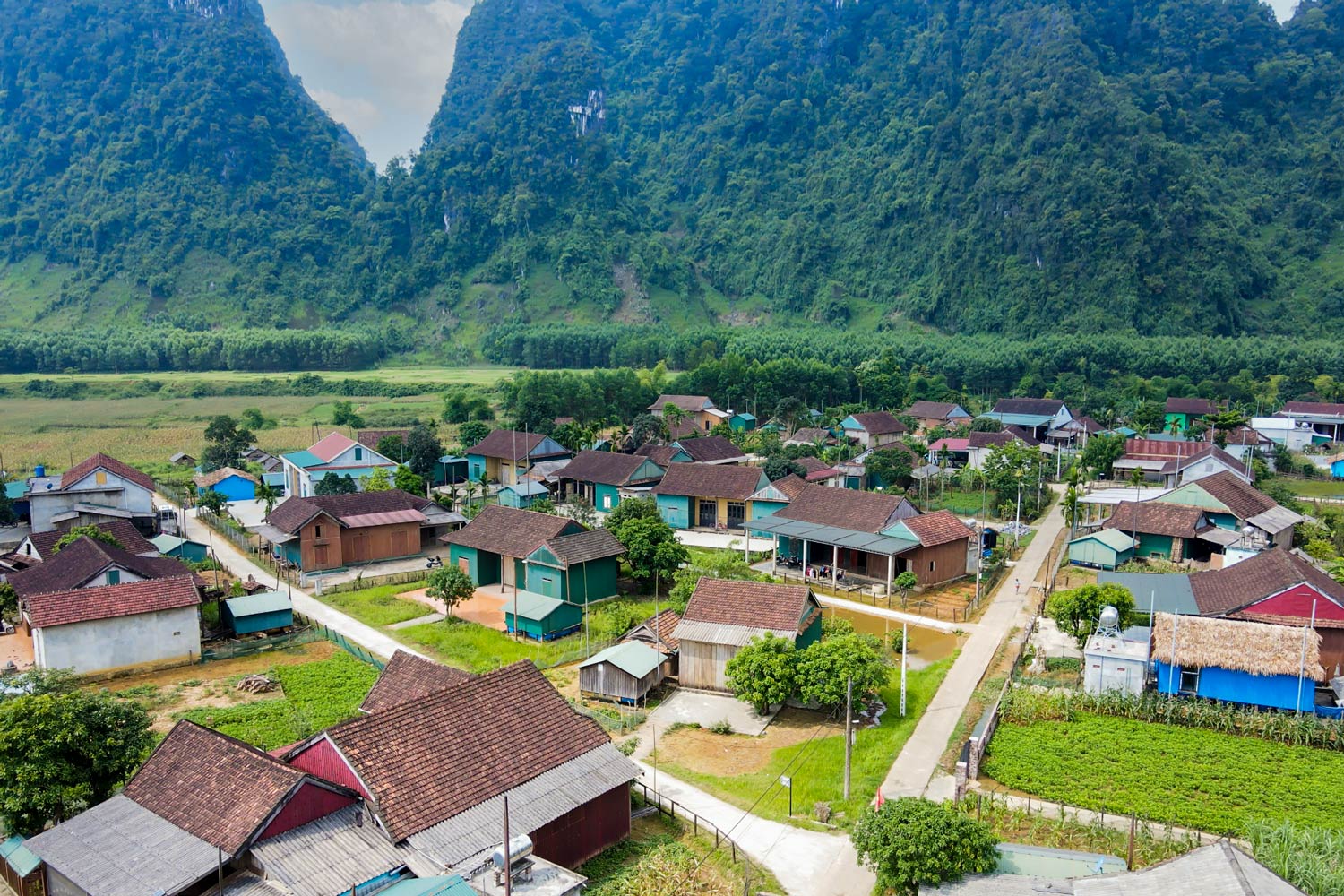
Community tourism: Sustainability and experiences
Community-based tourism
Community-based tourism is not merely about travelers visiting new destinations—it is an interactive model that fosters close engagement between tourists and local communities. This type of tourism emphasizes understanding the daily lives, culture, and traditions of local residents. The main goal is to benefit both the local community and visitors. By creating business and income opportunities for locals, community tourism helps improve living standards and promotes sustainable development. At the same time, tourists gain unique experiences by participating in local activities and learning about regional culture and cuisine.
Additionally, community-based tourism is often small-scale and locally focused, minimizing negative environmental impacts. Social responsibility from both the local community and visitors is a crucial aspect of this model, contributing to environmental conservation. Ultimately, community-based tourism not only facilitates cultural exchange between travelers and local residents but also bridges cultures between nations and ethnic groups. Through shared experiences, understanding and connections become deeper.
Tan Hoa Cillage—where pristine nature meets the rich cultural heritage of the Nguon people—is emerging as an attractive destination for both domestic and international tourists. Each year, tens of thousands of visitors come to explore the exciting tourism activities in the area.
Since November 2022, Oxalis has collaborated with the Quang Binh Provincial Department of Tourism and local authorities to develop Tan Hoa into a community-based tourism destination.
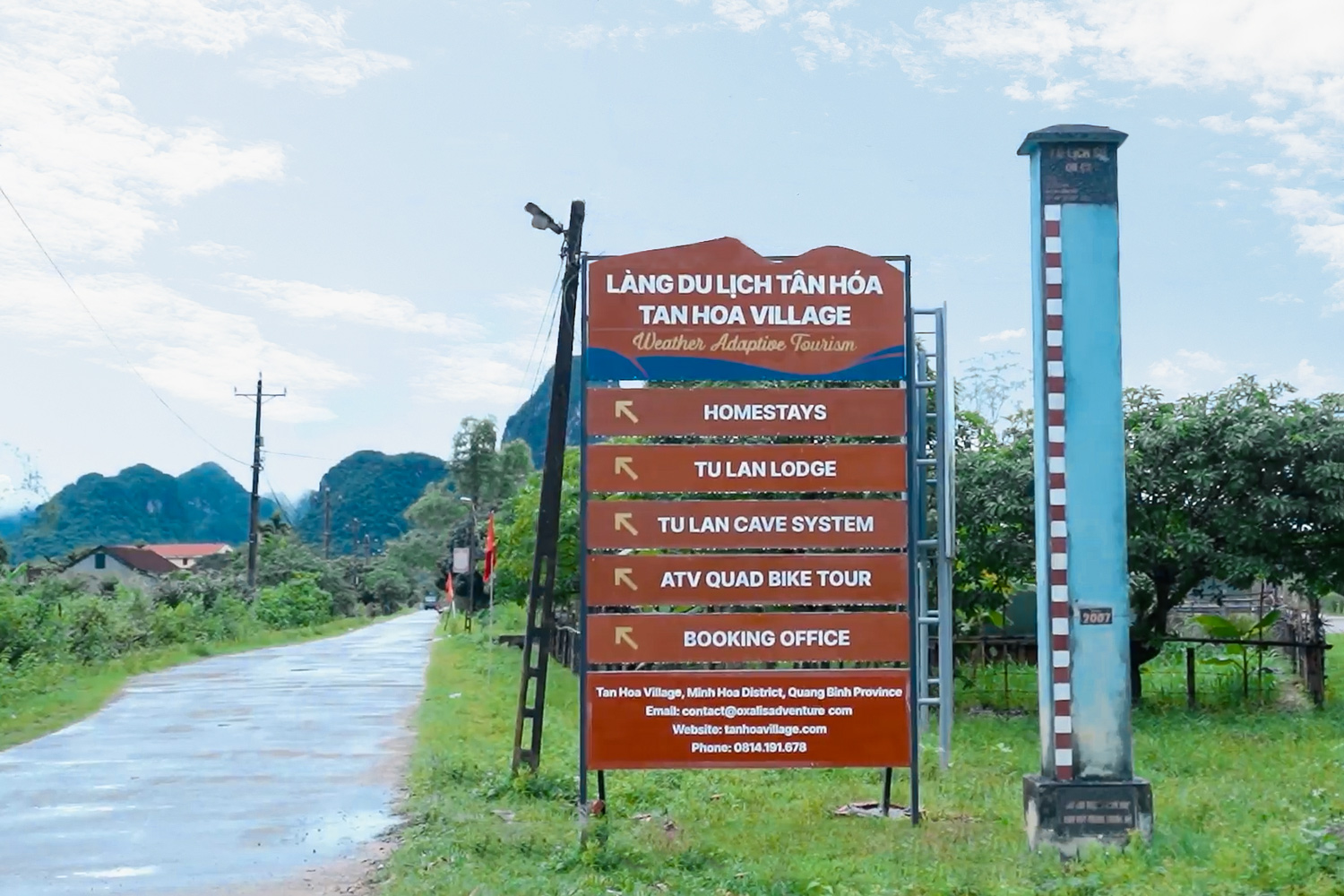
Under this initiative, the local community will independently manage homestays, restaurants offering traditional cuisine, and cultural tours showcasing the heritage of the Nguon people. Oxalis will support selected households in setting up homestays with modern amenities such as air conditioning, private bathrooms, and fully equipped facilities. Additionally, Oxalis will help connect visitors with these homestays. Homestay owners will receive training in hospitality, housekeeping, and customer service, ensuring high-quality experiences for guests staying and dining in the village.
Weather-adaptive tourism
In 2023, Oxalis implemented a collaborative plan with the local community to build 10 weather-adaptive homestays. These homestays are designed based on the floating house model, a traditional method used by locals to withstand floods. This approach not only protects the homestays from adverse weather conditions but also creates a unique accommodation experience for visitors. These homestays meet tourism accommodation standards while allowing guests to interact with locals and experience authentic rural life.

Oxalis also takes on the responsibility of promoting and bringing visitors to these homestays, ensuring the effective operation of weather-adaptive tourism. By leveraging creativity and natural resources, the tourism village of Tan Hoa is no longer restricted by the rainy season, opening up year-round tourism opportunities.
Tan Hoa aims to become a uniquely weather-adaptive tourism village in Vietnam and globally. By integrating tourism experiences such as exploring Tu Lan Cave, off-road motorbike tours through Tan Hoa Lim Forest, local culinary experiences at village homes, and weather-adaptive homestays, Tan Hoa has set ambitious goals.

With the development and expansion of weather-adaptive tourism, Tan Hoa hopes to welcome a large number of visitors in the future. By 2025, the village aims to attract 25,000 domestic and international tourists to this distinctive destination. Promoting sustainable tourism in Tan Hoa, adapted to climate change, not only brings economic benefits but also contributes to the protection and sustainable development of the local community.
Through meaningful development efforts, Tan Hoa has transformed from a village reliant solely on nature for survival into an attractive tourism destination. With the collaboration of Oxalis, local residents are not only creating unique experiences for visitors but also improving their quality of life. Tan Hoa Village is becoming a model for how community-based tourism and environmental conservation can go hand in hand, creating positive impacts and marking a promising development path for the future.
FAQs
What community-based tourism activities are available in Tan Hoa Village?
Since November 2022, Chua Me Dat (Oxalis) has collaborated with the Quang Binh Provincial Tourism Department and local authorities to develop Tan Hoa into a community-based tourism destination with a customer-centric approach. The local community manages homestay operations, local restaurants serving traditional cuisine, and cultural tours introducing the customs of the Nguon people. Oxalis supports several households in setting up fully equipped homestays with amenities such as air conditioning, modern bathrooms, and private restrooms. Additionally, Oxalis promotes these homestays to visitors. Homestay owners receive training on guest services, ensuring a high-quality experience for overnight guests and diners.
What is weather-adaptive tourism in Tan Hoa Village?
In 2023, Oxalis implemented a plan in collaboration with the local community to construct 10 weather-adaptive homestays in Tan Hoa Village. These homestays follow the floating house model, a traditional method used by locals to withstand floods. This design not only protects the homestays from extreme weather but also offers a unique lodging experience for tourists. These accommodations meet tourism standards while allowing guests to interact with locals and experience authentic rural life. Additionally, adventure tours exploring caves and trekking in the forest during the rainy season are carefully designed. River caves are replaced with dry caves, and routes are adjusted to ensure maximum safety in Tan Hoa’s weather conditions.
Which ethnic group resides in Tan Hoa Village?
The Nguon people, a subgroup of the Viet-Muong ethnic group, live in Tan Hoa Village. While not officially recognized as a distinct ethnic group in Vietnam due to the lack of a written language, the Nguon people have preserved and developed their unique cultural heritage.
What is special about the culture and customs of the Nguon people in Tan Hoa village?
The Nguon people in Tan Hoa village have a strong sense of community. Solidarity is evident in the way the entire village comes together to help when a family builds a new house. A unique custom of the Nguon people is the practice of betel chewing, which is common among both men and women. Another distinctive cultural feature is their celebration of Independence Day, which holds greater significance than the Lunar New Year. This festival lasts for half a month, allowing the community to commemorate and enjoy memorable moments together.
What unique travel experiences does Tan Hoa village offer?
Visitors to Tan Hoa Village can explore the Tu Lan Cave System, embark on an off-road motorbike tour through the Tan Hoa Lim Forest, enjoy a local family dinner experience, and stay in homestays designed to adapt to weather conditions. Various other tourism products and services are also available in Tan Hoa. These weather-adaptive tourism activities can be enjoyed year-round without being affected by the rainy season.
What are the top adventure tourism destinations in Tan Hoa Village?
The unique cave system of Tu Lan, which includes both dry and river caves, serves as the starting point for thrilling adventures ranging from one to four days. Visitors can experience exciting activities such as swimming through underground rivers hidden within the caves, admiring a diverse system of stalactites in various colors and shapes, camping in pristine forests next to clear streams and tranquil lakes, and even listening to the soothing sound of waterfalls both day and night. These extraordinary experiences attract thousands of tourists to Tan Hoa every year.
How does Tan Hoa Village preserve the traditional culture of the Nguon people?
The local family dinner experience in Tan Hoa village is not just a unique tourism activity but also a way to preserve and honor the traditional culture of the Nguon people. By enjoying traditional dishes, visitors can gain deeper insights into the local way of life and cultural heritage. This experience reflects respect for history and tradition while playing a crucial role in protecting and sustaining these values for future generations. It also promotes cultural diversity, offers an authentic connection to local daily life, and contributes to sustainable tourism and community development.
If I want to try the signature dishes of the Nguon people, what should I look for?
The distinctive cuisine of the Nguon people in Tan Hoa Village is an essential part of their culture and daily life. Dishes such as Com Poi, Thau Lang (sweet potato leaves), Oc Tuc (snails), and Ca Lao (eggplant) are more than just food—they symbolize the connection between the community and their environment. These unique dishes are highly recommended for anyone visiting Tan Hoa.
Why is Tan Hoa known as the flood-prone area of Quang Binh?
During the rainy season, from September to November each year, the Rao Nan River overflows from the upstream region, creating a strong water current that floods Tan Hoa commune. The lack of effective drainage options exacerbates the situation, as the only natural outlets are caves at the valley’s end, which are insufficient to handle the massive floodwaters. As a result, the area experiences dozens of floods annually, with water levels reaching up to 12 meters at peak times. This extreme flooding has led to Tan Hoa being recognized as the flood-prone area of Quang Binh.



